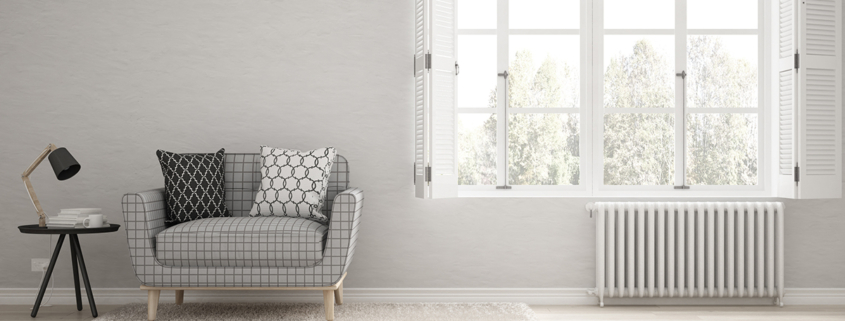Most Common Types of Residential Heating Systems
Furnaces
The majority of Canadian households rely on a central furnace to heat their homes. A furnace operates by forcing heated air via ducts, which distribute the warm air to rooms around the home via air vents or grills. This kind of heating system is called a ducted or forced air distribution system. It can be powered by electricity, natural gas, or fuel oil.
The fuel is mixed with air and burnt inside the gas furnace. The flames heat the metal heat exchanger, which transfers heat to the air. The air handler fan forces air through the heat exchanger and subsequently through the ducting. The combustion products are vented out of the building via a flue pipe. Older furnaces vented directly to the atmosphere, wasting around 30% of the fuel energy merely to keep the exhaust hot enough to rise through the chimney. Modern furnaces significantly decrease this waste by utilizing a fan to move the exhaust gases through the heat exchanger and induce draft in the chimney. Condensing furnaces are designed to retain much of the dissipating heat by cooling exhaust gases far below 60°C, where water vapour condenses into water. This is the main benefit of a high-efficiency furnace (or boiler). A plastic pipe is often used to vent these gases through a sidewall.
Heating system controls regulate when the various components of the heating system turn on and off. The most important control from your standpoint is the thermostat, which turns the system on and off to keep you comfortable. A typical forced air system will have a single thermostat. There are other internal controls in a heating equipment that are invisible yet critical set of safety controls.
In Canada, furnace efficiency is measured by AFUE (Annual Fuel Utilization Efficiency). AFUE estimates seasonal efficiency, averaging peak and part-load situations. AFUE accounts for start-up, cool-down, and other operating losses that occur in real operating conditions, and includes an estimate of electricity used by the air handler, inducer fan, and controls. The higher the AFUE, the more efficient the furnace or boiler.
Boilers
Boilers are special types of water heaters. While furnaces deliver heat in the form of warm air, boiler systems deliver heat as hot water, which releases heat as it flows through radiators in rooms throughout the house. The cooled water is then returned again to the boiler to be reheated. Hydronic systems are another term for hot water systems. Natural gas or heating oil are commonly used as fuel in residential boilers.
Instead of a fan and duct system, a boiler uses a pump to circulate hot water through pipes to radiators. Some hot water systems circulate water through plastic tubing in the floor, a system called radiant floor heating. Important boiler controls include thermostats and valves that regulate circulation and water temperature.
As with furnaces, condensing boilers are relatively common, and significantly more efficient than non-condensing boilers.




Leave a Reply
Want to join the discussion?Feel free to contribute!